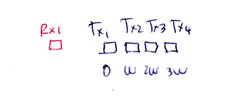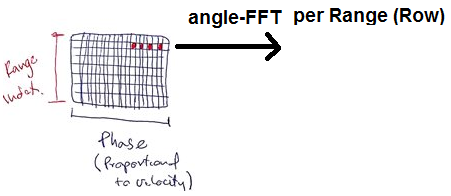Hello
Is the documentation promoted in this thread now available?:
https://e2e.ti.com/support/sensors/f/1023/t/603800
I understand the Binary Phase modulation, but I have doubts about where the decoder should be placed.
You mention the text below In this link: http://www.ti.com/lit/an/swra554a/swra554a.pdf
The processing chain is almost identical to the flow as described earlier in the context of TDM-MIMO, with
the exception of a decoding block which enables the signal contributions from the individual TX antennas
to be separated in the received data. This decoding must be performed before the angle-FFT (and ideally
after the Doppler-FFT, in order to enable phase corrections due to non-zero velocity to be applied prior to
decoding).
Does this mean that the doppler FFT would take as input a distorted version (Hadamard combination of the Txs) of the FMCW signal? Why is it not possible to decode immediately after the ADC?
Thanks for your help
Hector Gonzalez











